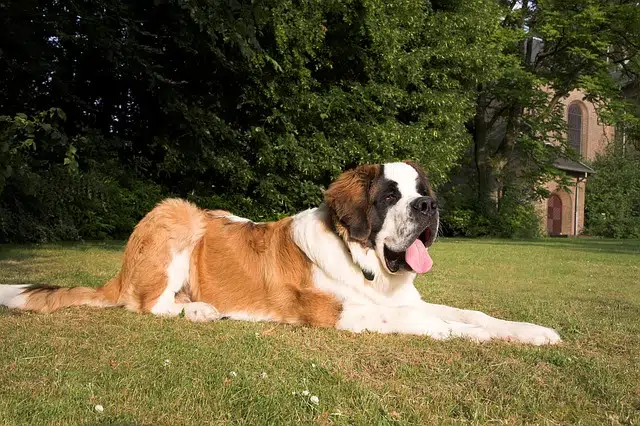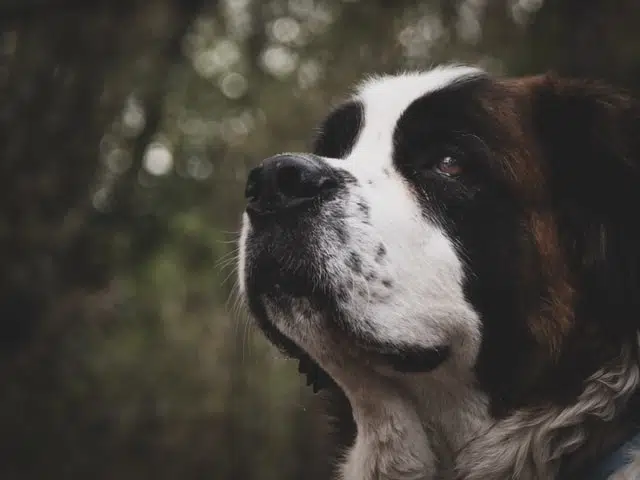Home » Blog » Pet » Pet Parenting Lifestyle » Saint Bernard – Gentle Swiss Giants
Categories
Tags
animal welfare
breed profile
buying a car
buying a pet
Car
car accessories
car care
car features
car insurance
Car safety
car sales
car service
cat
cat behaviour
cat body language
Cat Breeds
cat food
cat insurance
comprehensive car insurance
Dog
Dog Behaviour
dog body language
Dog Breeds
dog food
Dog Insurance
dog training
eco friendly cars
Kitten
New Car
pet accessories
pet activities
Pet Adoption
pet breeders
pet days of the year
pet fun stuff
Pet Health
pet insurance
pet parenting
Pet Safety
pet services
Puppy
rescue pets
road safety
road trip
safe driving
Recent Blog:
Facebook Posts
2 days ago
Are intestinal worms setting up camp in your dog’s gut without paying rent? Here’s how to spot the main culprits and get rid of them too:![]()
![]() Preventing, Identifying and Treating Intestinal Worms in Dogs - bit.ly/43YjCKu
... See MoreSee Less
Preventing, Identifying and Treating Intestinal Worms in Dogs - bit.ly/43YjCKu
... See MoreSee Less
Preventing, Identifying and Treating Intestinal Worms in Dogs
www.pd.com.au
Intestinal worms, such as roundworms in dogs are one of the least glamorous topics on the planet. These intestinal parasites that basically use our dogs
PD Insurance
with Dogs West.
4 days ago
We enjoyed meeting #breeders #doglovers and members at the Dogs West Open Day. Special thanks to our partner Dogs West for organising an incredible event. There is still time to enter our pawsome competition. Click here for details: bit.ly/4covyce![]() #PDinsurance #dogswestopenday #dogswest
... See MoreSee Less
#PDinsurance #dogswestopenday #dogswest
... See MoreSee Less
4 days ago
Did you know? The Manx is a breed that is known for its lack of a tail, which is caused by a genetic mutation.
... See MoreSee Less
The Saint Bernard is a biiiiiig dog. And they have big hearts to match! Who could resist those giant goofy paws and soft eyes? These dogs, despite their intimidating size, are basically made up of 90% love and kindness. The other 10% is slobber – which is arguably their only downside.
He’s a best friend, a people rescuer and a huggable softie… In this article we’ll tell you all about where his story starts and all you need to know about his health, personality and more. Stay tuned for a quick read that will give you all the fun facts of this admirable dog.
Saint Bernard fast facts
Here are some key features of the Saint Bernard dog breed:
- Lifespan: 8 to 10 years
- Height: 65 to 90 cm
- Weight: 55 to 85kgs (yes, really!)
- Coat: Smooth or rough
- Eye colour: Brown, or sometimes light blue
History of the Saint Bernard breed
The Saint Bernard dog originates in Switzerland. They were bred to be rescue dogs working at the Great St Bernard Hospice in the Swiss Alps, which lies on the Great St Bernard Pass. This road connects Switzerland and Italy and as you can imagine, is very high, very snowy, and very treacherous!
The Saint Bernard dogs were used thanks to their highly sensitive noses and big warm bodies. They would be able to sniff out a lost person who wandered off path or got trapped by a blizzard or avalanche. Then they’d lie with people, keeping them warm until a rescue party arrived. And it might not exactly be medically recommended these days, but the dogs also used to carry a flask of brandy around their necks so the lost or injured could take a swig for warmth and pain relief.
And it worked like a charm. While working as rescue dogs, the Saint Bernard breed was credited with saving more than two thousand people, although lost some of their own lives in the process during severe snowstorms. Without these big friendly giants, who knows what would have happened to people lost in the Alps?
Here’s an old video of Saint Bernard dogs in action in the Alps all those years ago:
The modern Saint Bernard
Some Saint Bernards still do rescue work, but these days they’re also popular pets. They’ve gentle temperaments and are very affectionate, but due to their sheer size it’s important to start positive reinforcement dog training and socialisation early.
An anxious, aggressive, or boisterous Saint Bernard can easily become dangerous to people and other dogs. Imagine one of them jumping up excitedly at your toddler or frail grandparent, for instance.
That said, they aren’t prone to aggression or separation anxiety. Overall, they’re generally kind and patient with children and adapt well to most living conditions due to their high tolerance levels. You should be able to integrate them into multi-pet homes without issues too.
Health and care needs
Along with Great Danes and Irish Wolfhounds, Saint Bernards are considered a ‘giant dog breed‘. It’s like having a lifesized teddy bear in your home. Unfortunately, big dogs tend to be prone to more health issues.
Because they grow quickly and are heavy, the Saint Bernard can easily develop issues with their bones and joints. This includes elbow or hip dysplasia, as well as bone cancer. Read about exercising your dog without walking for activities that reduce weight-bearing pressure on bones and joints.
That’s why it’s crucial these gentle giants receive carefully formulated diets to ensure they’re getting the right amounts of vitamins and nutrients. This gives them the best chance of developing healthily and not becoming overweight. It’s important to speak to your vet to ensure your Saint Bernard is eating a diet that’s appropriate for their developmental stage.
Speak to your vet about routine check-ups (crucial for good vet mental health as well) and checking for signs of typical breed health conditions. The sooner they’re identified the better the chance of successful treatment.

Potential health issues
Aside from bone cancer and hip dysplasia, some other common Saint Bernard health issues include:
- Eye disorders
- Epilepsy and seizures
- Eczema and dog skin conditions
- Heart disease (dilated cardiomyopathy)
It’s also important to get dog insurance early, before hereditary conditions develop. Then if your dog does develop them, you should have cover for management and treatment.
Our accident plan offers you cover for basics like post-accident consultations, surgery, and hospital stays. On the other end of the spectrum, our deluxe plan covers almost everything you could imagine including dental care. Why not take a couple of minutes to see how much you can cover your big kid’s toosh for?
Share On:




